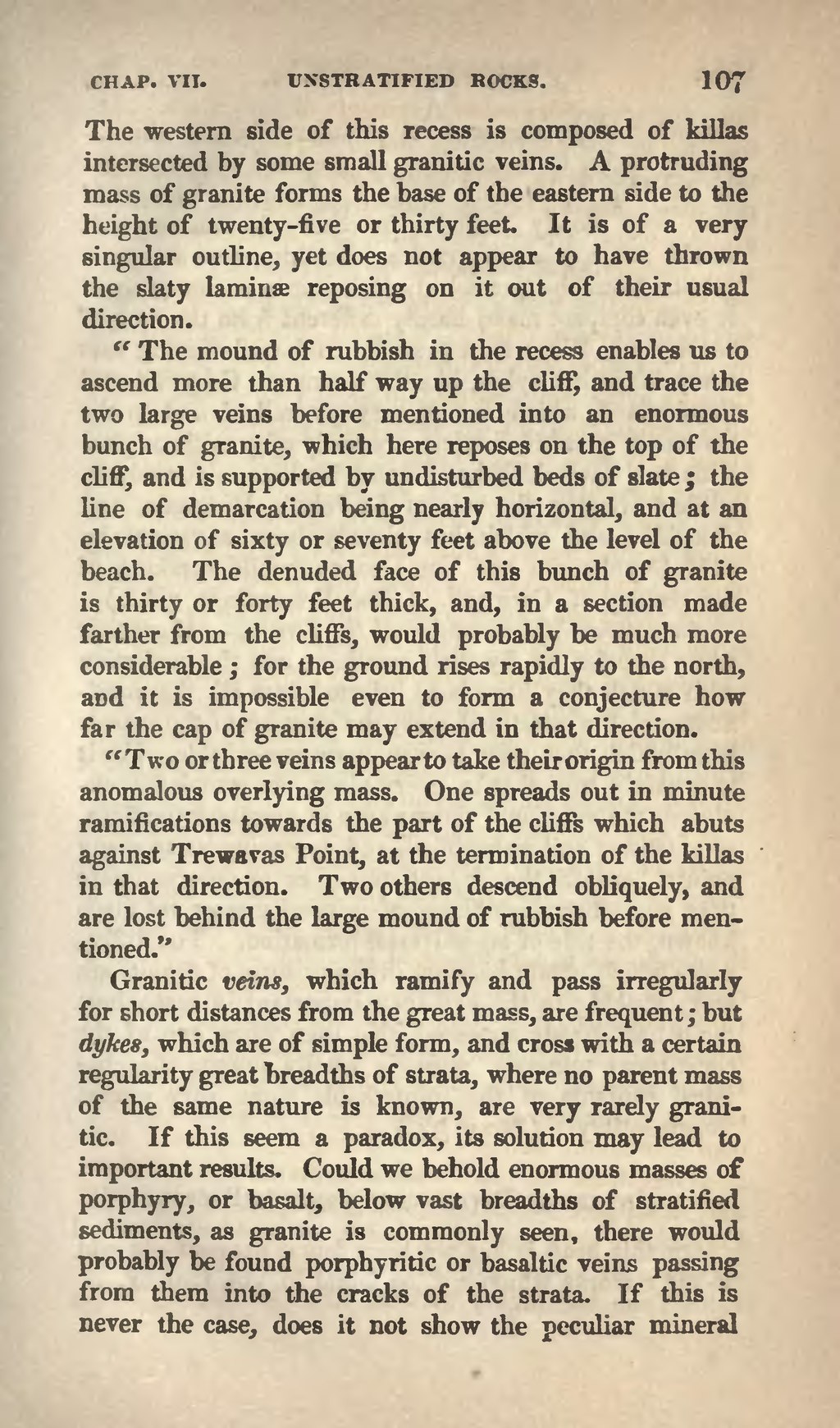The western side of this recess is composed of killas intersected by some small granitic veins. A protruding mass of granite forms the base of the eastern side to the height of twenty-five or thirty feet. It is of a very singular outline, yet does not appear to have thrown the slaty laminæ reposing on it out of their usual direction.
"The mound of rubbish in the recess enables us to ascend more than half way up the cliff, and trace the two large veins before mentioned into an enormous bunch of granite, which here reposes on the top of the cliff, and is supported by undisturbed beds of slate; the line of demarcation being nearly horizontal, and at an elevation of sixty or seventy feet above the level of the beach. The denuded face of this bunch of granite is thirty or forty feet thick, and, in a section made farther from the cliffs, would probably be much more considerable; for the ground rises rapidly to the north, and it is impossible even to form a conjecture how far the cap of granite may extend in that direction.
"Two or three veins appear to take their origin from this anomalous overlying mass. One spreads out in minute ramifications towards the part of the cliffs which abuts against Trewavas Point, at the termination of the killas in that direction. Two others descend obliquely, and are lost behind the large mound of rubbish before mentioned."
Granitic veins, which ramify and pass irregularly for short distances from the great mass, are frequent; but dykes, which are of simple form, and cross with a certain regularity great breadths of strata, where no parent mass of the same nature is known, are very rarely granitic. If this seem a paradox, its solution may lead to important results. Could we behold enormous masses of porphyry, or basalt, below vast breadths of stratified sediments, as granite is commonly seen, there would probably be found porphyritic or basaltic veins passing from them into the cracks of the strata. If this is never the case, does it not show the peculiar mineral
